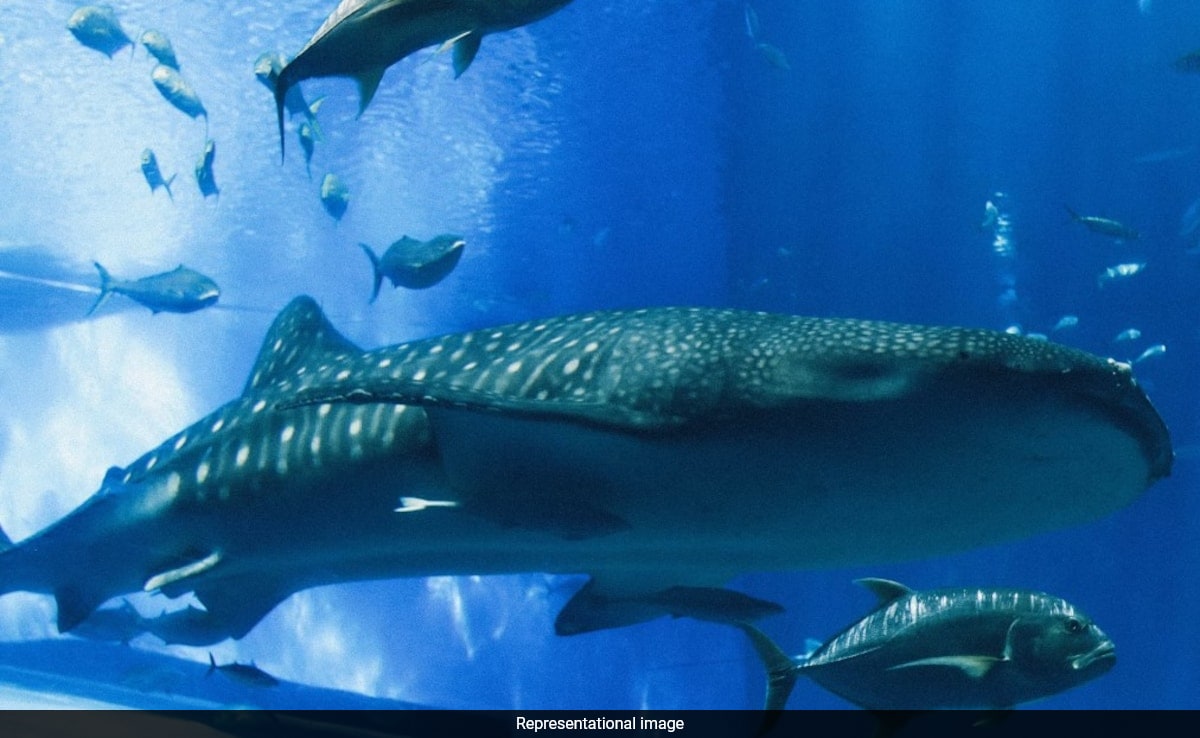China’s Xiaomeisha Sea World aquarium is facing widespread criticism after revealing its prized whale shark exhibit is actually a robotic replica. Following a five-year renovation, the aquarium reopened on October 1, attracting 100,000 visitors eager to see the world’s largest fish. However, excitement quickly turned to disappointment as visitors discovered the ‘whale shark’ was a mechanical imitation, the New York Post reported. Photos showed the fake shark’s obvious seams and gaps, sparking outrage among park-goers who paid $40 to see the real attraction.
Visitors on site angrily demanded their money back over the fake shark and flooded social media with complaints. One user wrote, “The venue isn’t large enough, and even the whale shark is artificial, By 3 o’clock, people were already demanding refunds.”
Another commented, “The most disappointing part was the whale shark exhibit. When I heard the name, I was full of anticipation, but when I arrived, I saw a mechanical whale shark. Even though it’s for the sake of animal protection, I’d rather they didn’t have one at all than show a fake one. It’s not interesting at all.”
Xiaomeisha Sea World has responded to the controversy, clarifying that the robotic whale shark was not intended to deceive visitors, but rather to comply with laws prohibiting the capture and trade of whale sharks.
Notably, the whale shark (Rhincodon typus) is the largest known surviving fish species. Reaching remarkable lengths, the largest confirmed whale shark measured 18 meters. To replicate this majestic creature, Xiaomeisha SeaWorld invested millions of Chinese yuan.
China has faced similar controversies in the past regarding animal exhibits and deception. The incident involving dogs being spray-painted to resemble pandas sparked widespread outrage and raised concerns about animal welfare and ethics. the incident happened in Taizhou Zoo in China’s Jiangsu Province which opened on May 1 for visitors to see the new animals.
The zoo advertised the attraction of “Xiong Mao Quan” which translates as “panda dogs” to boost its visitor footfall during the May Day holiday. As per the New York Post, zoo officials trimmed the manes of two chow dogs and dyed their faces black to resemble miniature pandas. The painted dogs were left on display every day between 8 am and 5 pm, where throngs of visitors congregated to look at them.
Despite their striking resemblance to giant pandas, some observers noted strange behaviour, such as head shaking. There was widespread outrage when visitors realised they were looking at chow-chow dogs instead of pandas. Many criticised zoo authorities for animal cruelty and deception.














